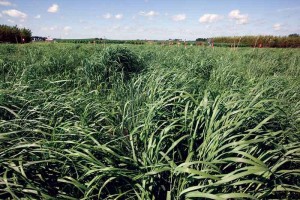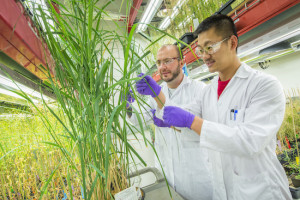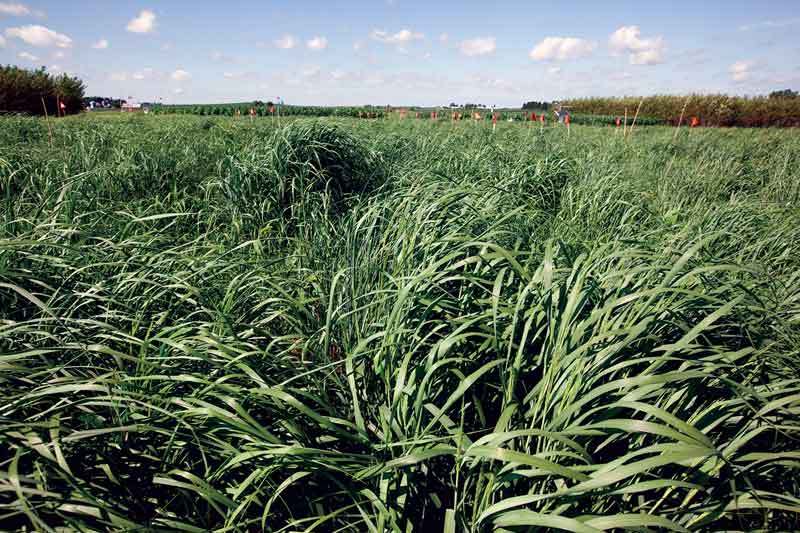
Switchgrass is a North American native prairie grass widely viewed as one of the most promising of all the biofuel crop candidates. (Photo courtesy of GLBRC)
If advanced biofuels are to replace gasoline, diesel and jet fuel on a gallon-for-gallon basis at competitive pricing, we’re going to need a new generation of fuel crops – plants designed specifically to serve as feedstocks for fuels. Researchers with the U.S. Department of Energy (DOE)’s Joint BioEnergy Institute (JBEI) have demonstrated the power of a new ally in this effort – proteomics!
In a study led by Benjamin Schwessinger, a grass geneticist with JBEI’s Feedstocks Division, researchers used advanced proteomic techniques to identify 1,750 unique proteins in shoots of switchgrass (Panicum virgatum), a North American native prairie grass that is widely viewed as one of the most promising of all the fuel crop candidates.
“This was a pilot study to actually test if these proteomic tools are applicable to switchgrass,” Schwessinger says. “That we were able to identify such a large number of proteins in our samples shows that proteomics will be useful when we start digging for proteins that will enable us to manipulate switchgrass for increased biofuel production.”
The results of this study are reported in the journal Proteomics. The paper is titled “Proteome profile of the endomembrane of developing coleoptiles from switchgrass (Panicum virgatum).” Schwessinger, who also holds an appointment with the University of California Davis, is the corresponding author. JBEI scientist Jeemeng Lao is the lead author. Other co-authors are Manoj Sharma, Rita Sharma, Susana Fernández-Niño, Jeremy Schmutz, Pamela Ronald and Joshua Heazlewood.

Benjamin Schwessinger (left) and Jeemeng Lao of the Joint BioEnergy Institute led a study in which proteomics were used to identify 1,750 unique proteins in shoots of switchgrass. (Photo by Roy Kaltschmidt)
The burning of fossil fuels is responsible for the release of nearly 9 billion metric tons of excess carbon into the atmosphere each year. Fuels made from the sugars in plants and other forms of biomass would provide a clean, green and renewable alternative if the production of biofuels is cost-effective. This will require, among other developments, plants whose sugars are more readily extracted and fermented into fuels by microbes.
“Plant cell walls or biomass are costly to deconstruct for sugar release for downstream applications such as biofuels, but genetic modifications to plant cell wall structure could result in significant downstream economic impacts,” Schwessinger says.
To this end, Schwessinger and his colleagues carried out the first proteomic analysis of switchgrass material, profiling the proteome of the switchgrass endomembrane from 10-day old dark grown shoots.
“The overall number of unique proteins we identified highlights the contributions proteomics can provide as more plant genomes become publicly accessible,” Schwessinger says. “You can think of it as a tool that helps us find needles in a haystack. For example, with proteomics we can determine the four highest expressed members out of a protein family of 60.”
This research was supported by the DOE Office of Science and the Human Frontier Science Program.
Additional Information
For more about the Joint BioEnergy Institute go here
For more about the Human Frontier Science Program go here
For more about Benjamin Schwessinger go here
